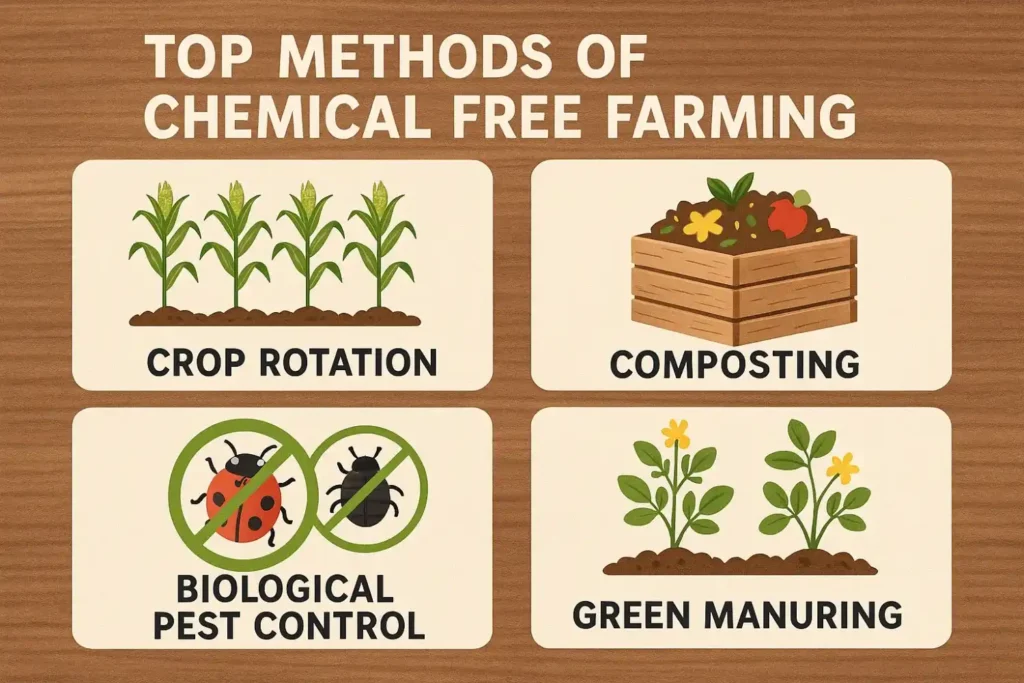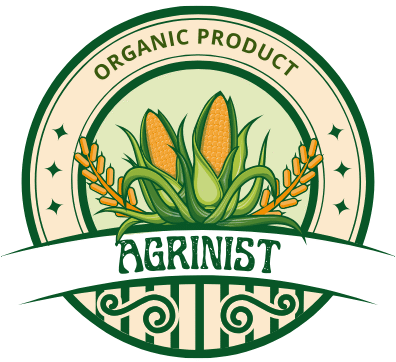Top Methods of Chemical Free Farming for Sustainable Agriculture
Chemical free farming is quickly becoming the preferred approach for environmentally conscious farmers and health-aware consumers. In the face of growing concerns about soil degradation, water contamination, and the long-term health effects of synthetic chemicals, chemical free farming offers a cleaner, greener solution. By eliminating artificial pesticides, herbicides, and fertilizers, this method helps maintain ecological balance, improves soil health, and yields nutrient-rich produce. Chemical free farming not only benefits the planet but also promotes better human health, making it a critical strategy for sustainable agriculture in the 21st century.
One of the core practices in chemical free farming is organic farming. This method avoids the use of synthetic chemicals and instead relies on natural inputs such as compost, green manure, and bone meal. Organic farming also emphasizes crop rotation and biodiversity, which naturally suppress pests and diseases while enriching the soil. Farmers adopting this method often see long-term gains in soil fertility, crop resilience, and environmental health.

Another widely respected method under chemical free farming is permaculture. This technique takes inspiration from natural ecosystems to design self-sustaining agricultural environments. Permaculture encourages the integration of crops, animals, water systems, and natural habitats, all working in harmony. Key principles include minimal disturbance to the soil, recycling of organic matter, and the strategic placement of plants to maximize productivity and minimize waste.
How to Get Started with Chemical Free Farming
For those new to chemical free farming, transitioning from conventional methods can seem challenging but rewarding. A great starting point is to analyze your soil. Understanding its pH, texture, and nutrient content allows you to tailor natural amendments like compost, manure, or cover crops that enrich it without synthetic chemicals.
Composting is a cornerstone of chemical free farming. By recycling kitchen scraps, animal waste, and crop residues into nutrient-rich compost, farmers can significantly enhance soil fertility. Compost adds organic matter, improves water retention, and supports beneficial microbial life.
Natural pest management is also essential. Instead of using synthetic pesticides, chemical free farming relies on biological controls like ladybugs, nematodes, and parasitic wasps. Homemade sprays made from garlic, chili, or neem oil can deter pests effectively without harming the environment. Trap cropping and companion planting are other strategies that divert or repel harmful insects.
Crop rotation and intercropping are practices that prevent the buildup of pests and diseases while optimizing the use of nutrients. For example, rotating legumes with cereals can fix nitrogen in the soil and improve subsequent crop yields. Intercropping involves growing different crops together to increase biodiversity and reduce the risk of crop failure.
Mulching is another effective method used in chemical free farming. Covering the soil with organic matter such as straw, leaves, or grass clippings conserves moisture, suppresses weeds, and slowly adds nutrients to the soil as it decomposes.
Green manuring involves growing specific crops like clover or alfalfa and then plowing them back into the soil. This enhances soil fertility and structure, and it’s a great way to increase organic content without relying on chemical fertilizers.
Water management is crucial. Efficient irrigation methods like drip irrigation or rainwater harvesting reduce water waste and promote healthier crops. Healthy soil enriched by chemical free farming methods naturally retains more moisture, reducing the need for frequent watering.
Agroforestry blends agriculture with tree cultivation to improve biodiversity and resilience. Trees provide shade, protect against erosion, and create a habitat for beneficial insects and birds.
Seed selection plays a vital role. Heirloom and non-GMO seeds are preferred in chemical free farming for their adaptability and resistance to local pests and diseases. These seeds preserve biodiversity and produce more flavorful and nutritious crops.
Community involvement is another pillar of success in chemical free farming. Joining local cooperatives or organic farming networks provides access to shared resources, collective marketing, and mutual support. Training workshops, online courses, and mentoring from experienced farmers can significantly ease the learning curve.
The Future of Chemical Free Farming
As global awareness about climate change, food safety, and sustainable living grows, the demand for chemical free farming is expected to rise. Governments and NGOs are increasingly offering subsidies, training, and certification programs to encourage this transition. Consumers are also willing to pay a premium for food labeled as organic or chemical free, making it financially viable for small and large-scale farmers alike.
Furthermore, advances in agricultural technology—such as soil sensors, satellite monitoring, and AI-powered crop management—can support the efficiency and scalability of chemical free farming. These tools can help farmers make informed decisions while staying true to eco-friendly principles.
Chemical free farming is not just a trend but a transformational shift in how we grow our food. It empowers farmers to work in harmony with nature rather than against it. By using natural inputs and ecological processes, this method nurtures the soil, protects water resources, and delivers food that is safer, tastier, and more nutritious.
Conclusion
Chemical free farming is more than a set of techniques—it’s a philosophy that values sustainability, health, and environmental stewardship. From composting and natural pest control to crop rotation and agroforestry, the methods involved offer a viable alternative to chemical-heavy practices. As more people recognize the long-term benefits of this approach, chemical free farming will play an essential role in securing a healthier planet and future generations. By adopting chemical free farming practices, we move one step closer to achieving a resilient and regenerative agricultural system.

